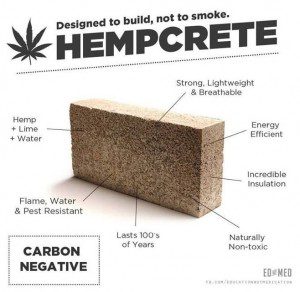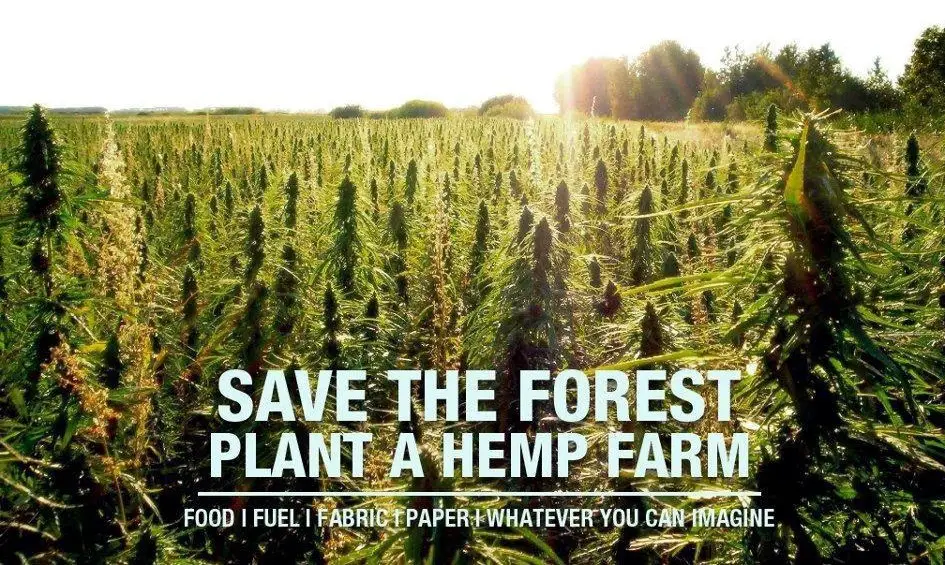Contributing Writer for Wake Up World
The Declaration of Independence was drafted on it. The American Founding Fathers urged the fledgling country to grow it. And the first paper was made from it 1,900 years ago. Hemp. It’s one of the most versatile and sustainable cash crops on the planet. For all it’s merits, however, the plant has also been on a “no-grow” list for over seventy years in the United States, due to draconian laws established by the Drug Enforcement Administration (DEA). Thankfully, that’s all about to change.
A Modern-Day Gold Rush
As one of the oldest cultivated crops, hemp has a rich and colorful history. Cloth, paper, food, building materials, fuel, plastic — you name it, and there’s a good chance it can be made from the plant.
[pro_ad_display_adzone id=”110028″]
Canada has fully embraced the recent demand for hemp and subsequently grows it to the tune of almost $1 billion a year, which equates to $250 net profit for each acre. Compare this with soy, the United States version of a major crop, which averaged around $71 per acre in 2014.
The Los Angeles Times reports:
“Canada’s windfall has been largely due to the American demand for omega-balanced hempseed oil. But hemp is also a go-to material for dozens of applications all over the world. In a Dutch factory recently, I held the stronger-than-steel hemp fiber that’s used in Mercedes door panels, and Britain’s Marks and Spencer department store chain used hemp fiber insulation in a new flagship outlet. “Hempcrete” outperforms fiberglass insulation.”
While Canada reaps the financial benefits of the plant, the U.S. still lags behind. In a step towards legalizing hemp for industrial uses, President Obama removed it from the Controlled Substances Act in 2014 — as long as it was used for agricultural research. All the same, a number of states are weary of the snail-like pace of the Feds and are taking matters into their own hands — by passing legislation to import hemp seed for pilot programs. But the DEA has been slow in reading the memo.
In May 2014, the agency seized a 286-pound shipment of Italian hemp seed bound for Kentucky’s state agriculture department. “After a weeklong standoff, a federal agency had to be reminded by the federal courts that the law had changed and Kentucky’s seed imports were legal,” writes the Times.
Cotton vs. Hemp
Political shenanigans aside, one of the most desperately needed uses for the plant involves the creation of durable and eco-friendly fabric — especially considering the damaging effects of conventional cotton production. Plainly put: pesticide-riddled cotton is an ecological and health nightmare. The crop requires massive amounts of irrigation, and is largely grown in dry regions of the world where water is scarce, like Egypt, China’s Xinjiang province, California and Texas.
The devastating effects of the crop are seen in places like the Aral Sea in Central Asia. Formerly the world’s fourth largest inland lake with a robust ecosystem, the sea has been reduced to a meager 15% of its previous size — largely due to irrigation required by the cotton industry. Compounding the problem, farmers are using increasingly more water on their fields in an attempt to combat the rising level of water and soil salinity in the area.
On average, it takes 1,800 gallons of water to grow enough cotton for one pair of blue jeans.
Water consumption isn’t the only issue with conventional cotton, pesticide use on the crop is notoriously high too. As the most pesticide intensive crop on the planet, cotton agriculture harms and kills countless farmworkers around the world every year. One pesticide, aldicarb, is particularly dangerous. It’s deemed “extremely hazardous” by the World Health Organization and a single drop absorbed through the skin is sufficient to kill an adult. And yet, aldicarb remains a popular choice in cotton production. Herbicides and chemical defoliants add to the toxic nature of the plant — all of which typically stay within the finished fabric for the lifespan of the clothing, and are assimilated through the skin. The same is true for bedding and furniture.
The Pesticide Action Network paints a bleak ecological picture of the crop:
- Nearly $2.6 billion worth of pesticides are sprayed on cotton fields each year — accounting for more than 10% of total pesticide use and nearly 25% of insecticides use worldwide.
- A 1997 Danish television documentary showed methyl parathion being sprayed on cotton fields in Nicaragua and Guatemala while children played in and beside the fields. It also documented numerous cases of methyl parathion poisonings in cotton production.
- Fish in Alabama: In 1995, pesticide-contaminated runoff from cotton fields killed at least 240,000 fish in Alabama. Shortly after farmers had applied pesticides containing endosulfan and methyl parathion to cotton fields, heavy rains washed them into the water. The Alabama Department of Agriculture and Industries stated that there was no indication that the pesticides were applied in an illegal manner.
- Australian Livestock: Australian beef was found to be contaminated with the cotton insecticide Helix® (chlorfluazuron) in 1994, most likely because cattle had been fed contaminated cotton straw. In response, several countries suspended beef imports from Australia. One year later, farmers were alarmed to discover that newborn calves were also contaminated with Helix, apparently because it passed through their mother’s milk.
- Birds in Texas: A breeding colony of laughing gulls near Corpus Christi, Texas, was devastated when methyl parathion was applied to cotton three miles away. More than 100 dead adults were found and 25% of the colony’s chicks perished.
A Better Way
When we examine the environmental and health impacts of cotton, hemp stands out as a winner for a number of reasons.
- Hemp produces up to three times the amount of usable plant material per acre than cotton.
- Requiring very little pesticide or fertilizer, hemp is a robust crop that can grow in a variety of conditions/soils.
- Water use for hemp is about half of what is required for cotton.
- Unlike cotton, hemp actually enhances the soil. With long roots up to 6 feet deep, the plant aerates and breaks up soil. It also helps to clean soil contaminated with heavy metals, solvents, pesticides and gasoline.
- With 3-8 times the tensile strength of cotton, and 4 times the warmth and absorbency, hemp is an exceptionally durable fabric.
- Hemp breathes and wicks moisture away from the skin more efficiently than cotton.
Even with all the ecological advantages of hemp, the motivating force for industrial change always comes down to profitability. Happily, hemp covers that aspect too. Says Doug Fine in the Los Angeles Times:
“We’re down to 1% of Americans farming; it was 30% when our world-leading hemp industry was stymied in 1937. The crop is more valuable today than it was then. We should be waving flags and holding parades for the farmers ready to plant the crop that Thomas Jefferson called “vastly desirable.” I know I’m ready. To cheer, and to plant.”
Article sources
- http://www.latimes.com/opinion/op-ed/la-oe-fine-hemp-marijuana-legalize-20140626-story.html
- http://www.columbia.edu/~tmt2120/introduction.htm
- http://globenewswire.com/news-release/2015/01/15/697583/10115665/en/Hemp-Inc-Reports-on-Senate-Bill-Filed-to-Legalize-Hemp-Cultivation-in-the-United-States.html
- http://www.panna.org/resources/cotton
- https://peopleandplanet.org/redressfashion/briefing/dirty
- http://www.slate.com/articles/health_and_science/the_green_lantern/2011/04/high_on_environmentalism.html
- http://www.treehugger.com/clean-technology/how-many-gallons-of-water-does-it-take-to-make.html
- http://www.greenchoices.org/green-living/clothes/environmental-impacts
- http://www.hempfarm.org/Papers/Hemp_Facts.html
Previous articles by Carolanne Wright:
- Dr Sebi: The Man Who Cures Aids, Cancer, Diabetes and More
- Safety of Merck’s Gardasil in Question as Rhode Island Mandates HPV Vaccine for Children
- Chronic Lyme Disease: A Modern Plague the Government Chooses to Ignore
- Monsanto’s Roundup Ready 1000 Times More Toxic Than Glyphosate Alone
- Big Pharma and Organized Crime — They are More Similar Than You May Think
- Over 100 Scientific Studies Agree: Cannabis Annihilates Cancer
- Emotional Energetic Healing: The Future of Medicine is Here
- Why Every Parent Should Consider Unschooling
- The Greenhouse of the Future: Grow Your Own Food Year-Round With This Revolutionary System
- First U.S. City Produces More Electricity Than It Uses — With 100% Renewable Technology
- Autistic Boy with Higher IQ Than Einstein Discovers Gift After Removal from State-Run Therapy
- Enhance Spiritual, Mental and Physical Well-being with a Pineal Gland Detox
[pro_ad_display_adzone id=”110025″]
[pro_ad_display_adzone id=”110027″]










